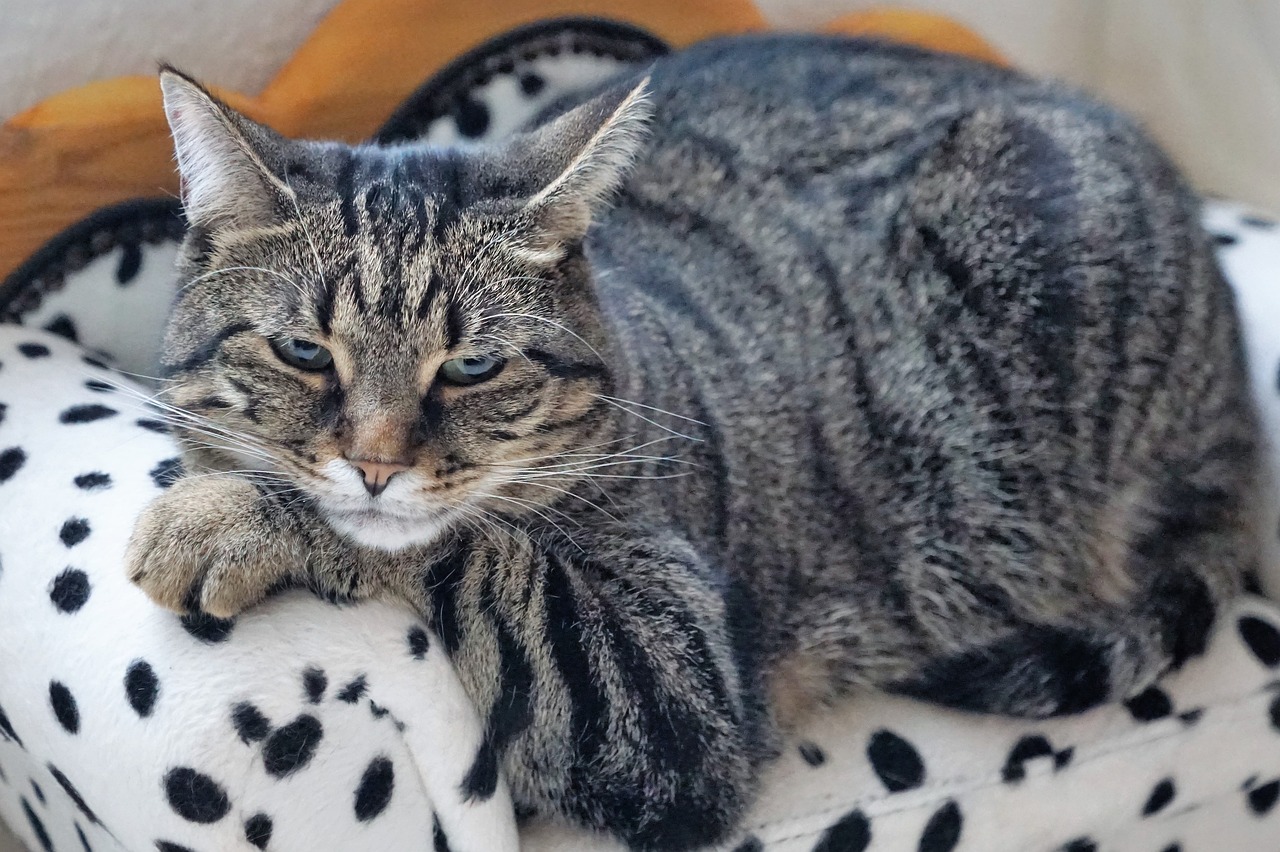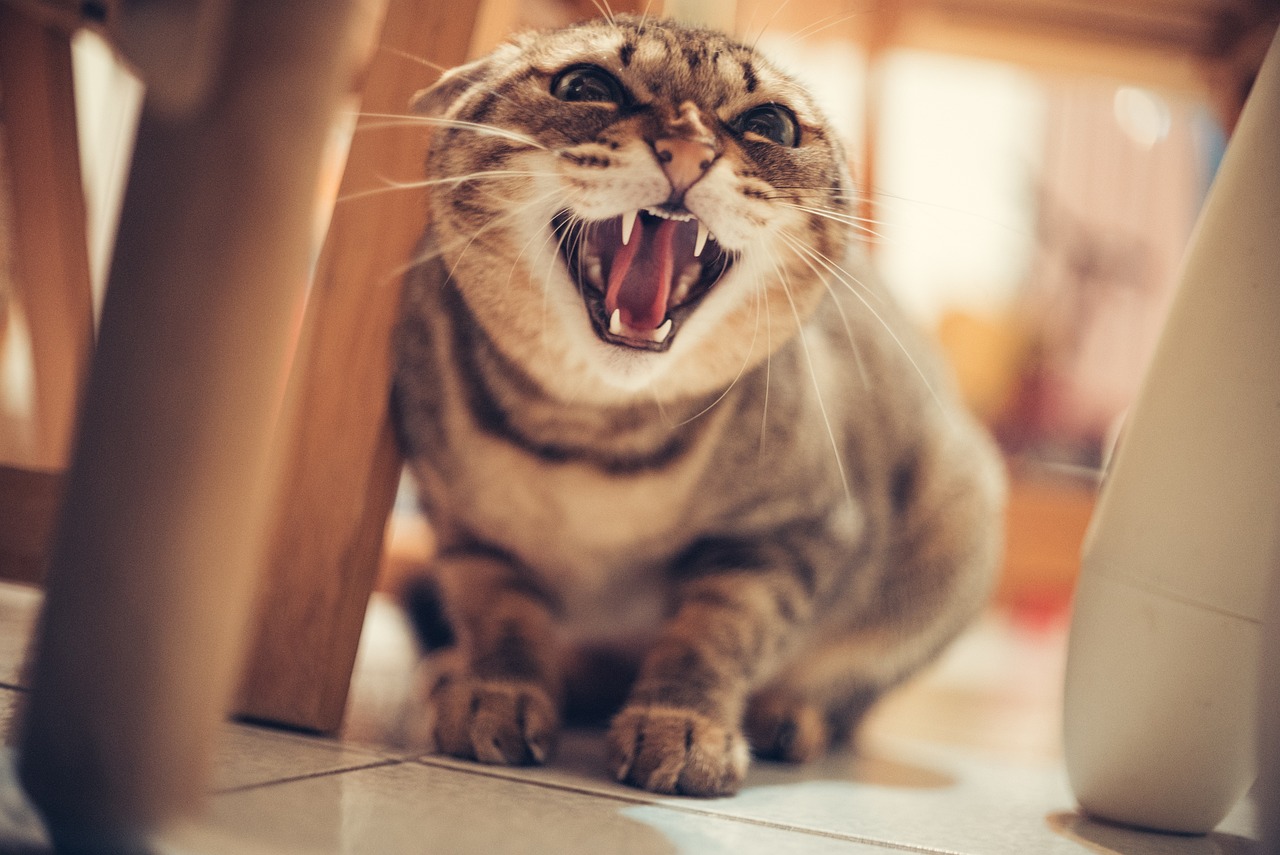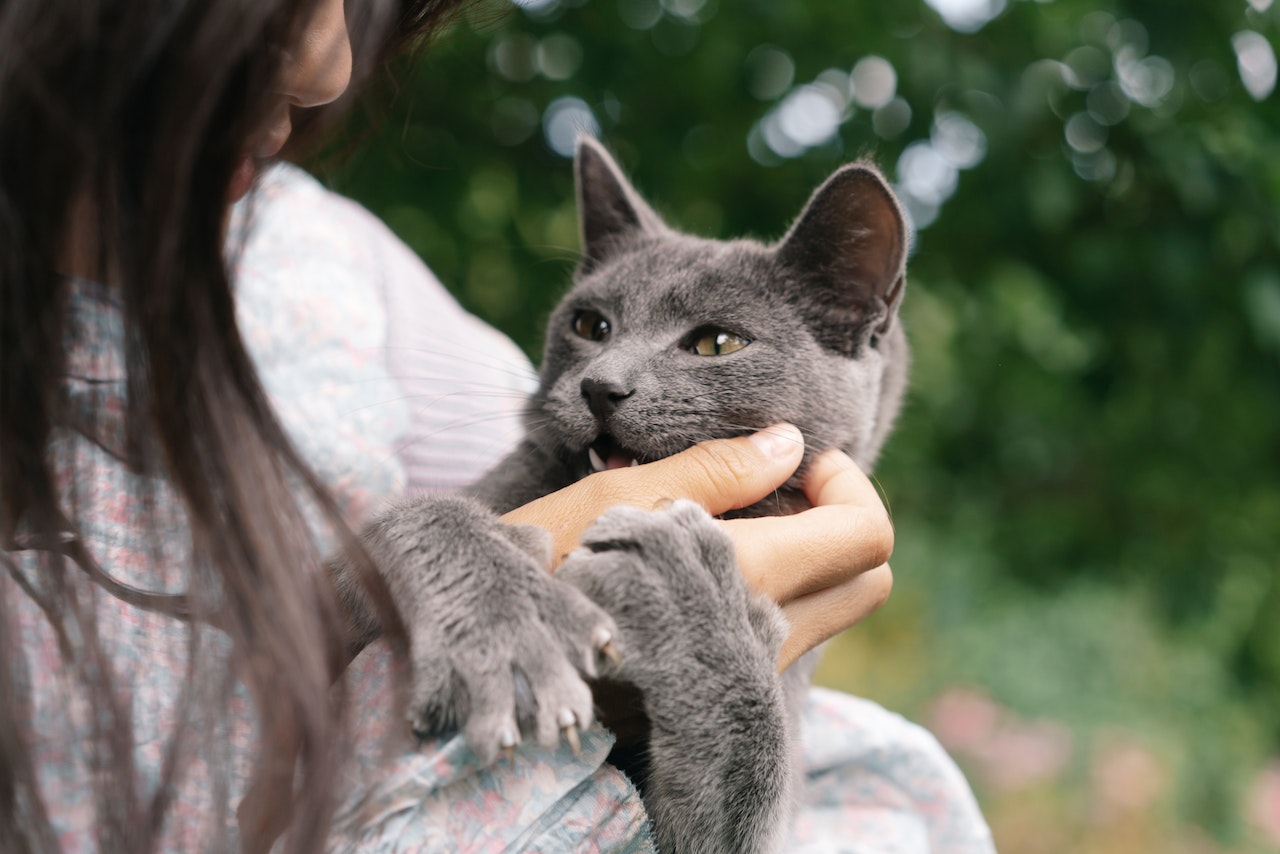Congratulations! Your feline overlord may have graciously decided to expand her kingdom and bring forth a litter of royal heirs. But how can you, a mere human, determine if your cat is truly pregnant, or if she’s just been indulging a bit too much at the royal feast (also known as her food bowl)? Fear not, dear reader, for I am here to guide you through the intricate art of feline pregnancy detection, with a sprinkle of humor and a dash of wit, because let’s be real, we all need a good laugh when dealing with the enigma that is cat parenthood.
Understanding the Mystique of Feline Pregnancy
Before we dive into the nitty-gritty of determining whether your furball is carrying a litter of future internet sensations, let’s take a moment to unravel the mysteries of feline pregnancy. After all, knowledge is power, and when it comes to dealing with pregnant cats, you’re going to need all the power you can get.
So, you might be wondering, “How did this happen?” Well, when a mommy cat and a daddy cat love each other very much… Just kidding! We’re not going down that rabbit hole. But in all seriousness, feline pregnancy, or ‘queening’ as it’s technically known, is a natural process that can occur when a female cat reaches sexual maturity, typically around five to six months of age.
Now, cats are notorious for their ability to reproduce at an alarming rate, with one pair of cats and their offspring having the potential to produce as many as 420,000 kittens in just seven years under optimal conditions. Yes, you read that right. Your little furball could be a kitten-producing machine.
The gestation period for cats is relatively short, lasting approximately 65 days, give or take a few days. And unlike humans, it’s not always easy to tell if a cat is pregnant. They’re masters of secrecy, and by the time you notice any physical changes, they could be well on their way to becoming a mother.
Feline pregnancy is a crucial time in your cat’s life. She will require extra care, attention, and plenty of good nutrition to ensure the health and wellbeing of both her and her kittens. It’s also a time when she might start acting a bit…strange. But then again, when are cats not acting strange?
So, now that we have a basic understanding of feline pregnancy, let’s move on to the main event – determining whether your cat is indeed expecting or just living her best life with a few extra treats.
How Do You Know if Your Cat is Pregnant?
- The Art of the Belly Rub
First and foremost, let’s talk about the belly. If your cat is indeed expecting, her belly will start to swell around the third week of pregnancy. But beware, this is not an invitation to start rubbing her belly like she’s a magic lamp that will grant you three wishes. Oh no, cats are far too dignified for that. Instead, observe from a respectful distance, and if she graciously allows you to touch her royal belly, feel for any signs of swelling. But remember, this could also just be a food baby, so don’t jump to conclusions just yet.
- The Nipple Spectacle
Next on the list are the nipples. Yes, you heard me right, we’re talking cat nipples. In the delightful world of cat pregnancy, the nipples become more prominent and may change in color, turning a rosy shade of pink. This phenomenon is affectionately known as ‘pinking up,’ because apparently even cat pregnancy comes with its own set of adorable terms. So, if your cat looks like she’s suddenly decided to enter a ‘Miss Rosy Nipples’ beauty pageant, she might just be pregnant.
- The Vomitorium
Now, let’s move on to a less glamorous aspect of cat pregnancy – vomiting. Much like their human counterparts, pregnant cats may experience morning sickness. So if your cat is suddenly turning her nose up at her royal feast and instead prefers to leave you little vomit gifts around the house, pregnancy might be the culprit. But then again, she could also just be expressing her royal displeasure at the quality of her feast, so make sure to rule out any food-related mutinies before jumping to conclusions.
- The Affection Connection
Cats are known for their independence and general air of indifference towards the human race, but pregnancy hormones can turn even the most aloof cat into a purring love machine. If your cat is suddenly acting like you’re the center of her universe, following you around like a furry little shadow, and demanding belly rubs (despite what we discussed earlier), she might be pregnant. Or she might have just realized how fabulous you are, but pregnancy is also a strong possibility.
- The Vet Venture
So, your cat has passed the home-based tests with flying colors, and you’re now 99% convinced she’s harboring a litter of furballs. What’s next? A trip to the vet, of course! Because nothing says ‘fun day out’ like shoving your cat into a carrier and dealing with her wrath for the next 48 hours. But hey, at least you’ll get some answers, right?
Upon arriving at the vet, try to maintain your dignity as your cat unleashes her fury in the waiting room, probably making all the other pets question their life choices. Once you’re in the examination room, the vet will likely perform an abdominal palpation. In layman’s terms, they’re going to give your cat’s belly a good old prod and poke to see if they can feel any kittens. However, this method is not always 100% accurate, especially in the early stages of pregnancy or if your cat is carrying a small litter. So, if your vet gives your cat’s belly a prod and declares, “I feel nothing,” don’t despair just yet. There are more high-tech options available.
- The Ultrasound Escapade
For those of you who want definitive proof and are willing to spend a little extra cash, an ultrasound is the way to go. This is where things get real, and you finally get to see if your cat is indeed a soon-to-be mother or just a master of deception. The vet will slather some gel on your cat’s belly, and voila, you’ll get to see what’s going on inside her mysterious feline womb. If there are kittens in there, you should be able to see their little hearts fluttering away. It’s a magical moment, unless, of course, your cat decides this is the perfect time to unleash her inner wildcat and make a run for it.
- The Weighty Matters
If you’re still not convinced or if your cat has decided that ultrasounds are beneath her, you can try keeping track of her weight. Pregnant cats generally gain about 2-4 pounds (0.9-1.8 kg) over the course of their pregnancy. So, dust off that scale that you swore you’d never use again after New Year’s, and start weighing your cat. If she’s gaining weight steadily, it could be a sign of pregnancy. Or it could be a sign that she’s been sneaking into the cat food when you’re not looking. Cats are sneaky like that.
- The Countdown to Cattiness
Let’s assume that all signs are pointing to yes, and your cat is indeed pregnant. Congratulations, you’re about to be a grandparent to a bunch of furballs! The typical cat pregnancy lasts about 65 days, so start the countdown and get ready for the arrival of the kittens. In the meantime, enjoy your cat’s pregnancy glow, and try not to take it personally when she decides your favorite chair is now her birthing throne.
- Preparing for the Big Day
As the big day approaches, your cat will start looking for a quiet, safe place to give birth. This is where you come in. Create a cozy nesting box in a quiet corner of your home, lined with soft blankets, and let your cat get acquainted with it. With any luck, she’ll decide it’s the purr-fect birthing spot. If not, well, at least you tried.
Conclusion
While this guide is filled with humor, it’s important to take your cat’s health seriously and consult with a vet if you have any concerns. After all, a pregnant cat is not just a walking belly of fur; she’s a soon-to-be mother who deserves the best care. So, buckle up, prepare for the kitten tsunami, and enjoy the rollercoaster ride that is feline pregnancy. Your life is about to get a whole lot furrier, and your cat is about to prove, once and for all, that she is indeed the queen of the household. Congratulations, and may the odds be ever in your favor!
Pro Tips: Navigating the Litter-ary Journey of Cat Pregnancy
So, you’ve made it through the rollercoaster ride of determining whether your feline friend is pregnant, and you’re now probably bracing yourself for the impending kitten explosion. But before you transform your living room into a kitten nursery, let’s equip you with some pro tips to ensure you and your soon-to-be-momma cat are ready for the big day and beyond.
Tip #1: Stock Up on Supplies
Think of this as the cat version of nesting. Ensure you have all the necessary supplies on hand, such as extra food, a comfortable nesting box, blankets, and kitten formula just in case momma cat needs a little help feeding her brood. Remember, preparation is key, and running to the pet store at the last minute is about as fun as stepping on a Lego.
Tip #2: Know the Signs of Labor
Educate yourself on the signs of cat labor. Restlessness, vocalizing, and a drop in body temperature are all cues that kittens are on their way. If you notice momma cat rearranging her nesting box like she’s on a feline episode of “Fixer Upper,” it’s go-time.
Tip #3: Hands Off the Kittens (At First)
Resist the urge to immediately swoop in and start cuddling the newborns. Momma cat knows what she’s doing (most of the time), and it’s important for her to bond with her kittens and start the feeding process. You can start handling the kittens more after a few days, once momma cat is comfortable and the kittens are settled.
Tip #4: Vet Visit ASAP
Schedule a vet visit for the newborns to ensure they’re healthy and to discuss future vaccination and spaying/neutering plans. This is also a good time to check in on momma cat’s health and make sure she’s recovering nicely from the miracle of birth.
Tip #5: Socialize the Kittens
Start socializing the kittens at around two weeks of age. Gentle handling, exposure to different people, and introducing them to various stimuli will help them grow up to be well-adjusted adult cats. Plus, it’s a great excuse to play with kittens, as if you needed one.
Tip #6: Spay and Neuter
Plan to spay or neuter the kittens before they reach sexual maturity to prevent any unplanned feline pregnancies. Remember, the goal is to keep the cat population under control, not to start your own cat colony.
Tip #7: Enjoy the Chaos
Lastly, embrace the chaos. Having a litter of kittens in your house is like living in a whirlwind of fur, paws, and tiny meows. It’s messy, it’s loud, and it’s utterly adorable. Soak it all in, take plenty of pictures, and remember that you’re witnessing the miracle of life, feline-style.
FAQ: Everything You Need to Know About Your Pregnant Cat
The typical gestation period for a cat is about 63 to 65 days, or roughly nine weeks. However, it’s always a good idea to consult with a vet to get a more accurate timeline based on your specific cat.
There are several signs to look out for, including a swollen belly, enlarged nipples (a phenomenon known as “pinking up”), increased affection towards humans, and weight gain. However, these signs can also be symptoms of other conditions, so a vet visit is recommended for a definitive diagnosis.
Yes, pregnant cats require more calories and nutrients to support the growing kittens. Your vet can recommend a high-quality kitten food to ensure she’s getting the proper nutrition.
It’s generally safer to keep a pregnant cat indoors to protect her from diseases, parasites, and other dangers. This also prevents her from giving birth outside where the kittens would be at risk.
Prepare a quiet, comfortable birthing area with a nesting box lined with soft blankets or towels. Ensure all necessary supplies are on hand, including extra food for mom and kitten formula just in case.
Give her space, but monitor her closely for any signs of distress. Most cats prefer to give birth in private, but it’s important to be nearby in case any complications arise.
If your cat is in active labor for more than an hour without producing a kitten, if she’s straining without progress for more than a few minutes, or if she seems to be in pain, contact your vet immediately.
It’s best to give mom and the kittens some time to bond before handling them. After a day or two, you can start gently handling the kittens to help socialize them, but always under the watchful eye of momma cat.
The kittens should have their first vet visit within a few days of birth to check for any health issues and to discuss a future vaccination and spaying/neutering schedule.
Kittens should stay with their mother and siblings for at least eight weeks to learn important social skills. After eight weeks, they can be adopted out to their forever homes, provided they are healthy and well-socialized.



